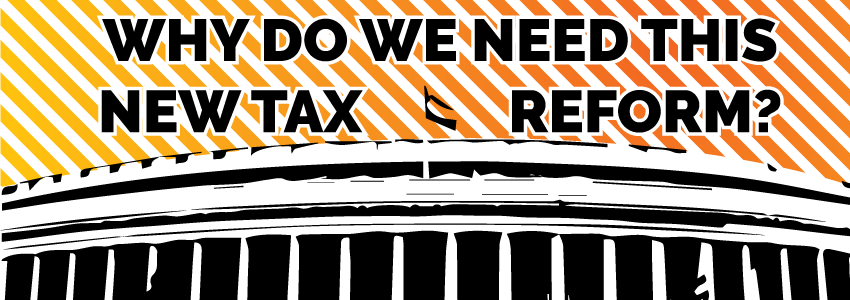The history of tax reforms in India dates back to 1985, when the then government had announced the Long Term Fiscal Policy. The MODVAT laws – which were the indirect tax laws we were following till 2017 – were introduced in 1986. And then, almost thirty one years later, in 2017, the GST (Goods and services tax) made its way into Indian lives.
In July 2018, GST will complete its first year as the ‘mother of all taxes’. If you have been living under a rock so far and have not yet realized why GST is such a big deal, allow us the opportunity to enlighten you! In this article you will learn about:
What is GST? And why do we need it?
GST, or the Goods and Services Tax, is an indirect taxation system that has been adopted by many countries across the world. We follow the ‘Dual GST Model’ like Canada.
Before GST, we had the VAT model of taxation. VAT allowed states to levy their own taxes on goods and services; and hence, each state in India had a different price for the same product. If you ever heard someone talk about the prices of cars in Delhi being cheaper than in Karnataka, VAT was the reason. This taxation model left a lot of ambiguity in prices, and it also led to an effect called the ‘cascading effect’ which was detrimental to the users.
For instance, a car manufacturer needs many parts to make one single unit. Under the VAT system, the manufacturer would pay tax on each every purchase and every step of the value-addition chain. Now, there are many steps in this chain. For example, let us consider the following steps in the manufacturing of a car:
- Buying raw materials
- Production or manufacturing of a unit
- Storing finished units in a facility
- Selling to retailers
- Selling to final customer
At every step in this chain, the manufacturer would spend money and pay a tax, thus increasing his cost price. The price of the final unit, when it was sold on the market, would include the cost price of manufacturing – and the taxes included therein – and a final tax on the sale. This tax-on-tax process is what caused the cascading effect of tax, resulting in a higher tax burden on the buyer.
These are the problems that GST aims to solve. First, under GST, the prices of goods and services have been kept the same across the nation. Since the states do not have the power to levy their own taxes anymore and have to follow a strict policy of uniform taxation, everything from a packet of cookies to a high-end car costs the same in Kanyakumari, as it does in Kanpur. Also, GST allows for manufacturers and service providers to claim the tax they pay on their purchases – or inputs, as they are known – from the government. Thus, there is no need for the makers to recover their tax expense from the buyer and the tax-on-tax effect is therefore, not a problem anymore. In fact, in the long run GST is expected to help lower prices by unifying the national economy.
What are the different tax slabs under GST?
As stated above, India follows the ‘dual GST model’. This means that the GST amount paid on any purchase is inclusive of two things: a state tax known as State GST (SGST), and a central tax known as Central GST (CGST). The amount of tax collected at every point of sale is therefore divided equally among the state and centre.
Now, in the case of inter-state transactions – as in when the goods or services are transferred from one state to another, or exported outside India – the tax collected goes directly to the centre. This is known as Integrated GST or IGST.
The tax slabs under GST have been created keeping these provisions in mind. As of now, the following tax slabs are applicable in India:






Who needs a GST registration?
Now that we understand why India needed the GST system, let us also take a look at the law and know who needs to apply for a GST registration. As per the law, you need a GST registration if:
- You are a business with an annual turnover per financial year exceeding the minimum threshold of Rs 20 lakhs (Rs 10 lakhs for North Eastern and hill states)
- You were registered under the earlier VAT law
- You are a business which was earlier registered and has now been transferred to someone else or demerged. In this case the transferee will need GST registration with effect from the date of transfer.
- You are someone in charge of driving and delivering a supply of goods across state borders
- You are a ‘Casual taxable person’ i.e. a goods or service provider who occasionally does business in a territory where GST is applicable but does not have a fixed place of business of his own
- You are a ‘Non-Resident taxable person’ i.e. if you are an NRI who occasionally does business in India
- You are an agent or a supplier
- You are an Input service distributor
- You are an E-commerce operator or aggregator (sites like Amazon, Flipkart etc.)
- You supply online information and database access or retrieval services
There is still some ambiguity regarding services like blogging where the government still has to define the applicability of the law, but it is safe to say that in most cases it is wiser to apply for GST registration and go ahead with your business with your GSTIN in tow. This way, you will avoid unnecessary penalties in the future.


